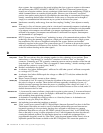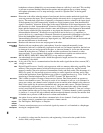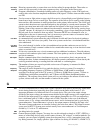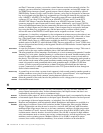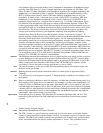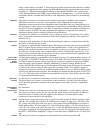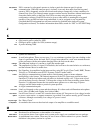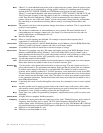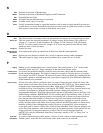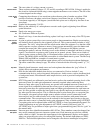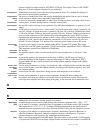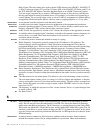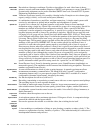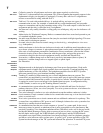142 Handbook of Intercom Systems Engineering
Matrix
“Matrix” is a term inherited from earlier point-to-point intercom systems, where all point-to-point
communication was accomplished by closing specific switches in a switching matrix. Examples
include the RTS™ CS9500, CS9600, and CS9700 Intercom Systems. In many instances,
“Matrix” is used interchangeably with “Intercom System”. RTS™ ADAM™, ADAM™ CS, and
Zeus™ Intercom Systems, on the other hand, do not use a switching matrix, but use a method
called Time Division Multiplexing (TDM), in which communications are routed as digital
packets. However, use of the term “matrix” persists since packet routing basically accomplishes
the same thing as a conventional switching matrix: namely, connecting distinct talkers and
listeners.
Maximum SPL
The acoustic level above which operation changes from linear to nonlinear. This is a specification
usually for microphones.
Mho
The old unit of conductance or transconductance, now a siemen. The more familiar units of
transconductance are amperes (output) per volts (input). For electronic devices, the units are
usually millisiemens or milliamperes per volt.
Mic
Short for Microphone
Micro (µ)
Micro is a prefix meaning one millionth. For example a one microfarad capacitor has a
capacitance of a millionth of a farad.
Microcontroller
A Microprocessor that has a built in RAM (Random Access Memory), built in ROM (Read Only
Memory), parallel type inputs / outputs, and often a serial input / output.
Microphone
A transducer that converts sound into an electrical output or voltage.
Microprocessor
The heart of a computer on a chip. Has inputs and outputs and can read RAM (Random Access
Memory) and ROM (Read Only Memory). Used in the Model 802 to process stimuli such as
button pushing and incoming tally signals and produce reactions such as blinking or steady lamp
illumination, crosspoint closure, tally generation, relay control, or audible chime signal.
milli (m)
A prefix that means one-thousandth.
Mixer
An electronic device used to combine several signals inputs to a single output or to stereo outputs.
Often other features are added to make it easy to achieve the basic goal.
Mix-Minus Bus /
feed
1. In the studio, a mix-minus feed can be fed to a singer on stage. The mix- minus consists of a
prerecorded orchestra. The performers microphone signal and the mix-minus feed are combined
in another mixer output for the final air or recorded feed. This method is used for reasons of
economy and to simplify production. 2. In ENG operations, a mix-minus feed is used for the IFB.
The mix-minus allows the talent to hear the program audio that includes the voices of other talents
at other venues, but not the talent’s own voice. The effect is to allow more normal conversations,
on air, among the performers. The bus feed refers to the mixer mix-minus feed available to one or
more IFB program inputs.
Monaural
Containing one source of audio although the source may be a summation of two or more original
sources.
Monitor
An audio speaker used to supply program audio to the control room, audio mixer, and to others
who need an acoustic audio feed. Some special monitors are used for musicians to hear their own
instrument or voice. Usually a monitor is placed in the Green Room.
Mu (µ)
Greek letter, mu, symbol for permeability (magnetic), amplification factor, prefix for micro (one-
millionth).
Mu Metal Shield
A highly effective magnetic shielding material.
Multiplexing
A method of carrying more than one signal on a single “path.” Multiplexing may be by means of
frequency, time division, and / or space. The TW system frequency multiplexes DC power,
speech signals, and a 20 kilohertz call signal on a single pair of wires. The Models 848A / DC848
use time multiplexing in a digital RS485 signal to send data for all 24 stations down a single path.
mV
Millivolt or one thousandth of a volt.
mW
Milliwatt or one thousandth of a watt.



